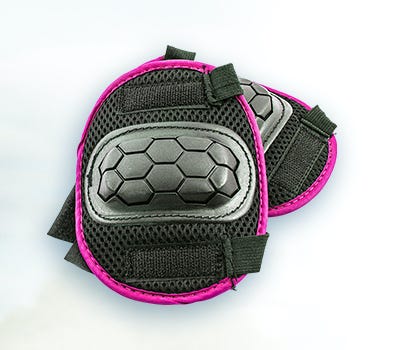TPEs Step Up the Game in Extreme Sports Equipment
Kraiburg’s Thermolast K compounds are suitable for use in surfboard pads, mouth guards, helmets, knee pads, head lamp seals, and more.
August 20, 2020

Cave diving, jet skiing, motocross, surfing, skydiving and boxing are extreme sports involving a high degree of risk and speed. Thermoplastic elastomers (TPEs) play key roles in ensuring the safety of participants.
TPE compound supplier Kraiburg TPE offers a range of Thermolast K TPE compounds that can be applied in extreme sports equipment. With properties to deliver durability, versatility, ease of coloring and soft-touch feel quality, TPEs are the right fit for improved functionalities and safety of use of sports equipment. End users benefit from the specialized fit, feel and look of the end products.
|
Knee pads for motocross are but one safety equipment item that rely on thermoplastic elastomers to deliver performance and aesthetics. Photo: © 2020 Kraiburg TPE |
Several series in the Thermolast K have low temperature resistance down to -40°C. The compounds have excellent mechanical properties to boot. Moreover, the Thermolast K scratch resistance series features water and weather resistant properties, making it suitable for use in sports equipment applied in extreme weather conditions.
Good abrasion properties of the series are important for equipment like snow rockets hand handle and ski stick grips. Furthermore, the compound’s hardness ranges from super soft (<10 shore A) up to 50 shore D; and it has features of durability and versatility allowing it to be widely used in extreme sports equipment.
Thermolast K compounds are suitable for use in various parts of sports equipment, such as surfboard pads, mouth guards used for boxing, helmets, knee pads, dampers for ski binding, head lamp seals, and goggle strips.
Thermolast K series TPEs have also been optimized for the extrusion process, such as film extrusion. They can also be processed through injection molding, and co-injection molding in combination with a wide range of thermoplastic materials such as polypropylene (PP), acrylonitrile-butadiene-styrene (ABS), polycarbonate (PC), PC/ABS, polycyclohexylenedimethylene terephthalate (PCT), acrylonitrile-styrene-acrylate (ASA), styrene-acrylonitrile (SAN), acrylic (PMMA), and polyethylene terephthalate (PET).
The environmentally-friendly series of compounds are free of latex, PVC, phthalates and heavy metals and are also recyclable. Overall, product designers will marvel the flexibility and versatility of the compounds that allow for ergonomic and complex designs of sports equipment parts. The consistent colorability add to the enhanced appearance the TPEs provide to end products.
About the Author(s)
You May Also Like





